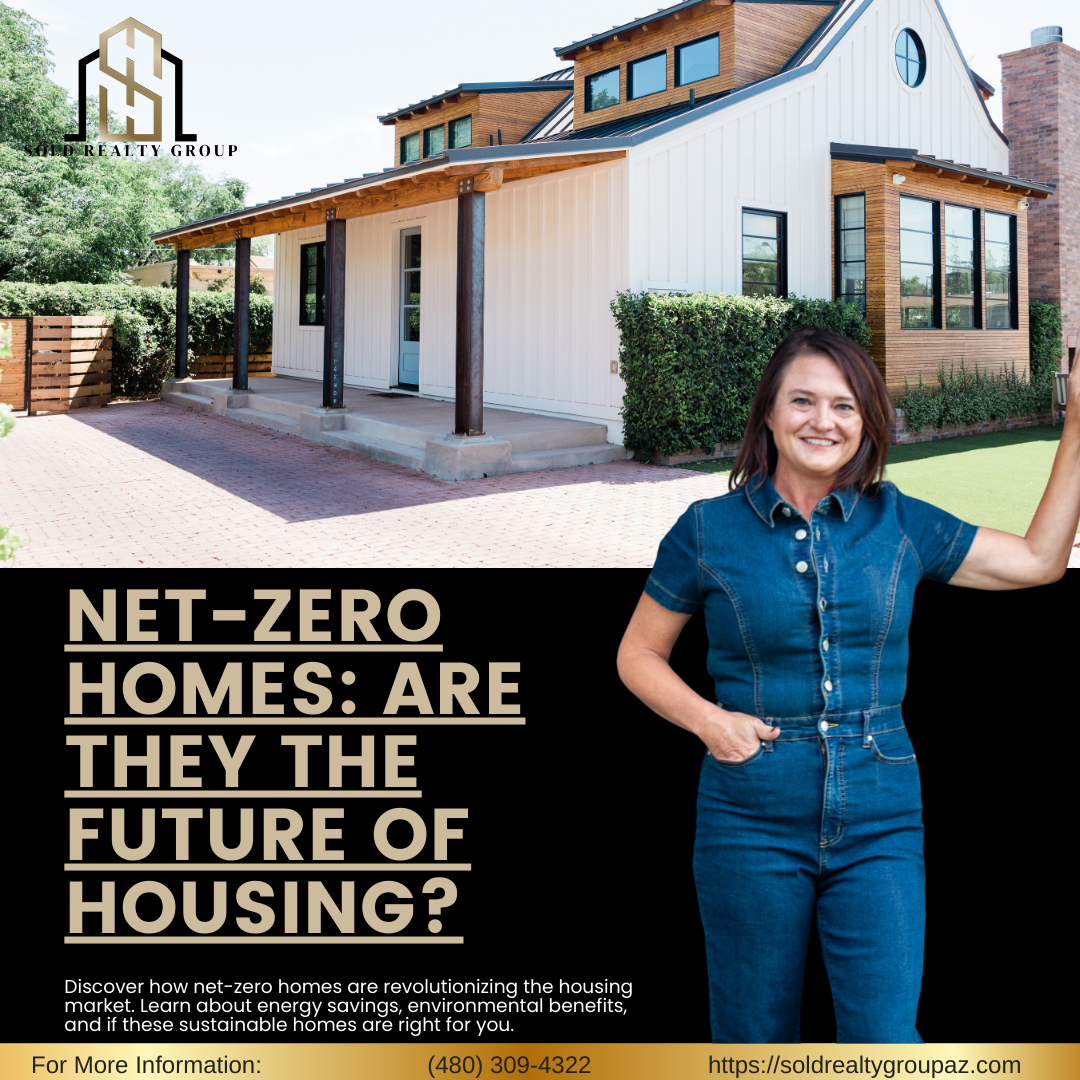Net-Zero Homes: Are They the Future of Housing?
As sustainability becomes a top priority for homeowners and buyers, net-zero homes are gaining momentum as the future of housing. These self-sustaining properties produce as much energy as they consume, reducing environmental impact and lowering utility costs. But what exactly makes a home net-zero, and is this trend here to stay?
What is a Net-Zero Home?
A net-zero home is designed to generate enough renewable energy to meet its own energy needs over the course of a year. This is typically achieved through a combination of:
-
Solar Panels – Capturing energy from the sun to power the home.
-
Energy Storage Systems – Storing excess energy in batteries for use during non-sunny periods.
-
High-Efficiency Insulation – Reducing energy loss through walls, windows, and roofs.
-
Smart Home Technology – Optimizing energy usage through automated climate control, lighting, and appliances.
By balancing energy production and consumption, these homes help homeowners reduce their reliance on traditional power grids.
Key Benefits of Net-Zero Homes
1. Significant Energy Savings
With energy costs continually rising, net-zero homes offer homeowners the ability to reduce or even eliminate electricity bills. By generating their own power, residents are less affected by fluctuations in energy prices.
2. Environmental Impact Reduction
Net-zero homes significantly lower carbon footprints by relying on renewable energy. This makes them an attractive choice for environmentally conscious buyers looking to minimize greenhouse gas emissions.
3. Healthier Indoor Living Spaces
Most net-zero homes are built with high-quality air filtration systems and non-toxic building materials, improving indoor air quality and creating a healthier environment for residents.
4. Increased Home Value
As sustainability becomes a key factor in real estate, energy-efficient homes tend to attract more buyers. A well-built net-zero home can see a higher resale value compared to traditional homes.
5. Energy Independence
By generating and storing their own electricity, homeowners gain protection from power outages and reduce their dependency on utility companies.
Challenges and Considerations
While net-zero homes offer numerous advantages, there are some challenges to consider:
-
Higher Initial Costs – Building or retrofitting a home to be net-zero requires upfront investments in solar panels, insulation, and energy-efficient appliances.
-
Limited Availability – Not all locations have the same incentives or infrastructure to support net-zero home development.
-
Maintenance and Upkeep – Solar panels and energy storage systems require occasional maintenance to ensure optimal performance.
However, many states and municipalities offer tax incentives, rebates, and grants to offset the initial costs of net-zero home investments.
Are Net-Zero Homes the Future?
With increasing climate concerns, rising energy costs, and technological advancements, net-zero homes are quickly becoming a mainstream housing trend. Many new developments are incorporating sustainable design elements, and buyers are increasingly prioritizing energy-efficient homes.
If you’re considering a net-zero home, working with a knowledgeable real estate professional can help you find the perfect property or transition your existing home toward sustainability.
📢 Thinking about buying or selling an energy-efficient home? Let’s chat! I can help you navigate the market and find a home that meets your sustainability goals. 🌍🏡
Categories
- All Blogs (228)
- Arizona Real Estate & Local Market (15)
- Buying, Selling & Investing Tips (69)
- Home Improvement Ideas (39)
- HOME MAINTENACE TIPS (22)
- Home Selling Strategies (25)
- Legal & Financial Consideration (11)
- Listing (4)
- Living in Queen Creek (13)
- LIVING IN SANTAN VALLEY (10)
- Local Business Spotlight (1)
- Local Events & Activities (2)
- Question & Answers (1)
- Real Estate Education & Empowerment (8)
- Sold Selling Method: Perception (5)
- Sold Selling Method: Presentation (5)
- Sold Selling Method: Price (3)
- Staging (14)
- Sustainability and Green Living (4)
Recent Posts










GET MORE INFORMATION


